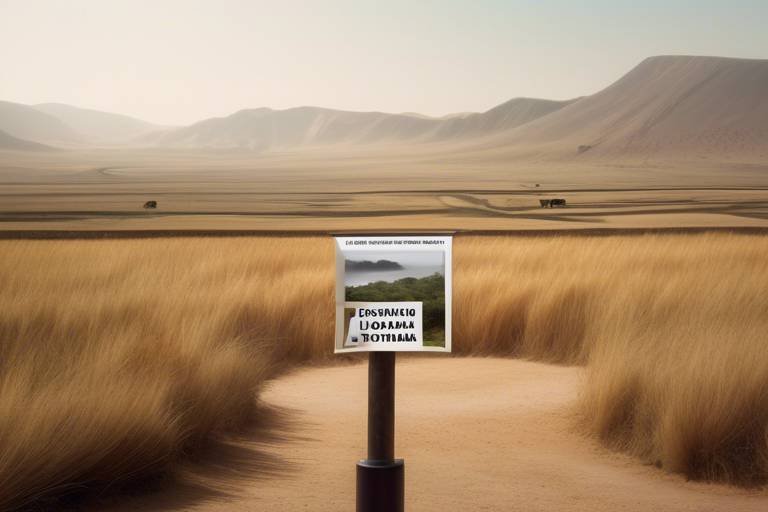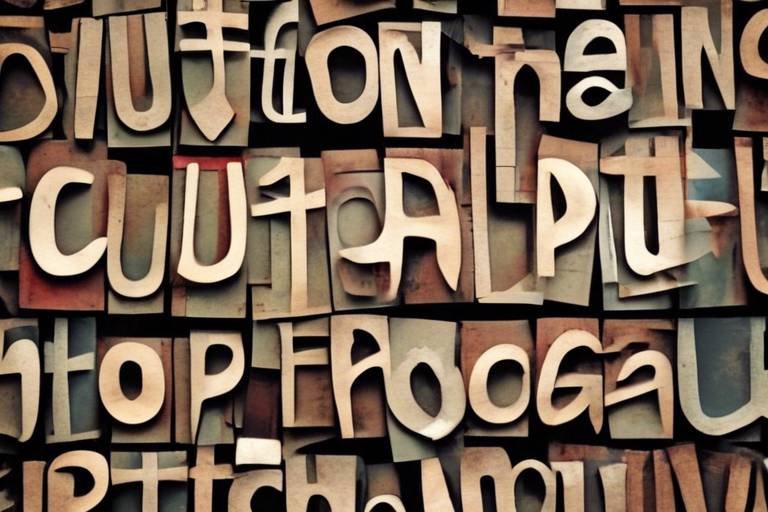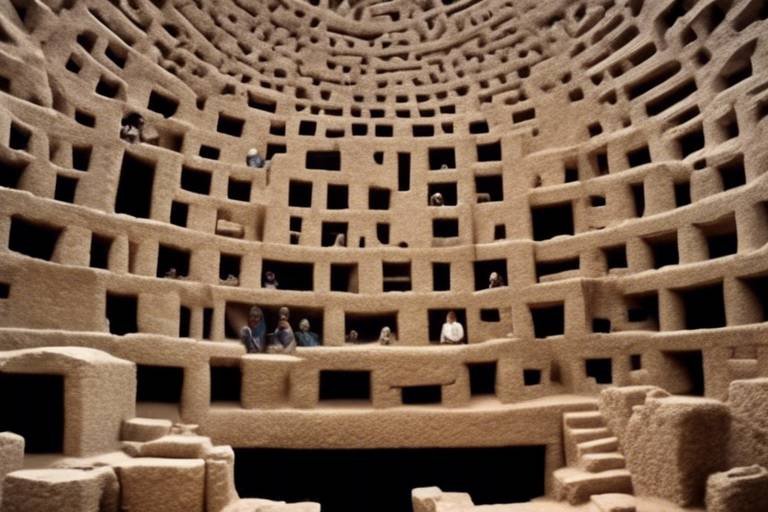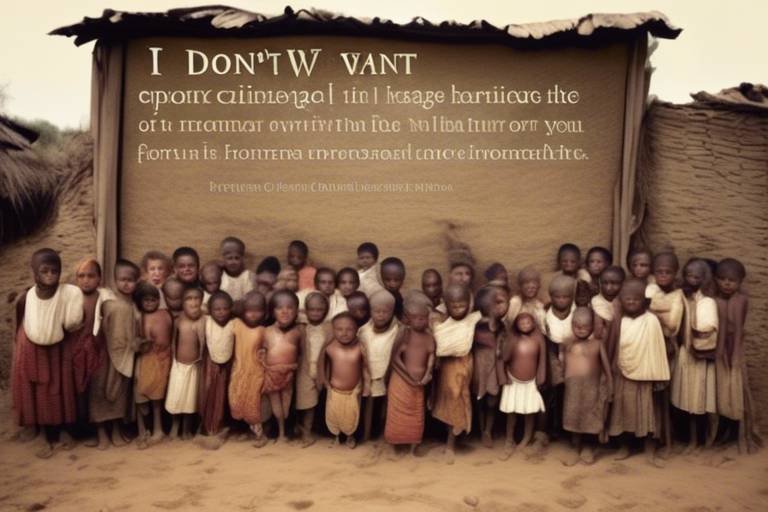The Role of Cultural Diplomacy in Heritage Preservation
Cultural diplomacy serves as a powerful tool in the preservation of heritage, acting as a bridge between nations to protect and promote cultural treasures worldwide. By fostering collaboration and understanding, cultural diplomacy plays a pivotal role in safeguarding the legacy of our past for future generations.

Preservation of Historical Landmarks
Cultural diplomacy initiatives play a significant role in the preservation of historical landmarks around the world. By leveraging international cooperation and raising awareness, these initiatives contribute to securing funding and implementing conservation projects that are crucial for ensuring the longevity of these significant sites. Through collaborative efforts and partnerships, cultural diplomacy helps in safeguarding historical landmarks from the threats of deterioration and destruction, preserving them for future generations to appreciate and learn from.

Intercultural Dialogue and Exchange
Cultural diplomacy plays a crucial role in preserving heritage by fostering international cooperation, promoting mutual understanding, and facilitating the exchange of cultural knowledge. This article explores how cultural diplomacy contributes to the conservation and promotion of global heritage sites.
Cultural diplomacy initiatives aid in the preservation of historical landmarks by raising awareness, securing funding, and implementing conservation projects that ensure the longevity of these significant sites.
Intercultural dialogue and exchange are the heartbeats of cultural diplomacy, serving as bridges that connect nations through shared heritage practices, traditions, and values. By engaging in meaningful conversations and collaborative programs, countries promote mutual respect and appreciation for diverse cultural identities. This exchange not only enriches individual perspectives but also strengthens global unity through cultural understanding.
Cultural diplomacy acts as a powerful tool for countries to wield soft power on the global stage. By showcasing their rich heritage and cultural assets, nations can influence international perceptions positively, thus building strong relationships with other countries. Through cultural diplomacy, nations can project their unique identities and values, fostering admiration and respect from the global community.
Cultural diplomacy plays a vital role in advocating for the protection and recognition of UNESCO World Heritage Sites. By mobilizing support from various nations, cultural diplomacy ensures the preservation of these exceptional cultural and natural treasures for future generations to cherish and appreciate.
Collaborative artistic and cultural projects facilitated through cultural diplomacy initiatives provide a platform for artists, performers, and cultural institutions to exchange ideas and showcase their heritage on a global scale. These collaborations not only preserve traditional arts and practices but also foster creativity and innovation, enriching the cultural landscape of participating nations.
Cultural diplomacy contributes significantly to the promotion of heritage sites as tourist destinations, driving economic growth and creating employment opportunities in local communities. By attracting visitors from around the world, heritage sites supported by cultural diplomacy initiatives become hubs of cultural exchange and economic prosperity.
Through the lens of shared heritage and cultural values, cultural diplomacy plays a pivotal role in peacebuilding and conflict resolution. By promoting dialogue, understanding, and reconciliation among nations with historical tensions, cultural diplomacy paves the way for peaceful coexistence and mutual respect, fostering a harmonious global community.
Embracing digital technologies and innovative approaches, cultural diplomacy initiatives ensure the digital preservation of heritage artifacts, monuments, and traditions. By making cultural heritage accessible and relevant in the digital age, cultural diplomacy safeguards the legacy of past generations and inspires creativity and appreciation for cultural diversity.
Stay tuned for the frequently asked questions section!

Soft Power and International Relations
Soft power is a concept that holds immense significance in the realm of international relations. It refers to a nation's ability to influence others through non-coercive means, such as culture, values, and policies, rather than through military or economic force. Cultural diplomacy plays a pivotal role in enhancing a country's soft power by showcasing its heritage, traditions, and cultural assets to the world. Through cultural exchanges, artistic collaborations, and promotion of cultural heritage, countries can build positive relationships with other nations, shaping perceptions and fostering understanding.

UNESCO World Heritage Sites
Cultural diplomacy plays a significant role in advocating for the protection and recognition of UNESCO World Heritage Sites, which are globally recognized for their outstanding universal value. These sites represent cultural and natural heritage of exceptional importance, ranging from iconic landmarks to unique ecosystems that need to be preserved for future generations.
Through cultural diplomacy initiatives, countries collaborate to mobilize support from the international community for the conservation and safeguarding of UNESCO World Heritage Sites. This collective effort aims to raise awareness about the importance of these sites, address threats such as climate change and unsustainable tourism, and promote sustainable management practices to ensure their longevity.
Moreover, cultural diplomacy fosters dialogue and cooperation among nations to enhance the protection of these sites, encouraging mutual respect and understanding of diverse cultural heritage. By engaging in joint initiatives and sharing best practices, countries can work together to address challenges facing UNESCO World Heritage Sites and promote their significance on a global scale.

Artistic and Cultural Collaborations
Artistic and cultural collaborations are at the heart of cultural diplomacy initiatives, fostering a rich tapestry of creative exchanges and mutual learning experiences. These collaborations transcend geographical boundaries, bringing together artists, performers, and cultural institutions from diverse backgrounds to celebrate and preserve heritage on a global stage.
One of the key aspects of artistic and cultural collaborations is the opportunity they provide for artists to showcase their unique heritage, traditions, and artistic expressions to a broader audience. Through collaborative projects, artists can not only preserve their cultural identity but also share it with the world, promoting cross-cultural understanding and appreciation.
Moreover, cultural collaborations facilitate the exchange of ideas and techniques, allowing artists to learn from each other and incorporate new perspectives into their work. This cultural exchange not only enriches the artistic landscape but also creates a platform for innovation and creativity to flourish.
Collaborative projects in the realm of arts and culture also play a significant role in preserving traditional practices and rituals that are at risk of being lost over time. By engaging in joint initiatives, artists and cultural practitioners can ensure the continuity of age-old traditions, passing them down to future generations and keeping them alive in a rapidly changing world.
Furthermore, artistic and cultural collaborations have the power to break down barriers and build bridges between communities, fostering connections that transcend language and cultural differences. Through shared creative endeavors, individuals from diverse backgrounds can find common ground, fostering a sense of unity and solidarity that transcends borders.
In essence, artistic and cultural collaborations facilitated by cultural diplomacy not only promote the preservation of heritage but also serve as a catalyst for cross-cultural dialogue, mutual respect, and appreciation of the rich diversity that defines our global community.

Tourism and Economic Development
Cultural diplomacy plays a significant role in driving tourism and fostering economic development through the promotion of heritage sites as attractive destinations for visitors worldwide. By leveraging cultural assets and historical landmarks, countries can boost their tourism industry, generate revenue, and create employment opportunities, contributing to sustainable economic growth.
When heritage sites are promoted effectively through cultural diplomacy initiatives, they not only attract tourists but also stimulate local businesses, hotels, restaurants, and transportation services. This influx of visitors not only benefits the tourism sector but also has a ripple effect on the overall economy, boosting various industries and supporting entrepreneurship in the region.
Moreover, the preservation and promotion of heritage sites as tourist attractions can lead to the revitalization of neglected areas, encouraging infrastructure development, urban renewal, and the enhancement of cultural amenities. As a result, communities surrounding these sites can experience increased prosperity and improved quality of life, creating a positive cycle of economic development.

Peacebuilding and Conflict Resolution
Peacebuilding and conflict resolution are essential aspects of cultural diplomacy, where shared heritage and cultural values play a significant role in fostering understanding and reconciliation among nations with historical tensions. By emphasizing common traditions and promoting dialogue, cultural diplomacy acts as a bridge to facilitate peaceful interactions and mitigate conflicts. Through cultural exchanges and collaborative projects, countries can address past grievances, build trust, and work towards sustainable peace agreements.

Digital Preservation and Innovation
In the realm of cultural diplomacy, the advancement of digital preservation and innovation stands as a pivotal force in safeguarding heritage artifacts and traditions for future generations. Through the integration of cutting-edge technologies and inventive methodologies, cultural diplomacy initiatives are spearheading the digital conservation of invaluable cultural treasures.
One of the key aspects of digital preservation is the digitization of historical documents, artworks, and artifacts, allowing for their virtual accessibility and long-term conservation. By converting physical items into digital formats, these cultural assets can be preserved in perpetuity, transcending the limitations of time and space.
Moreover, digital innovation in cultural diplomacy extends to the creation of immersive virtual experiences that enable individuals to explore heritage sites and cultural landmarks from anywhere in the world. Through virtual tours and interactive platforms, audiences can engage with heritage in a dynamic and interactive manner, fostering a deeper appreciation for diverse cultures.
Furthermore, the utilization of digital tools and platforms facilitates the dissemination of cultural knowledge and traditions on a global scale. By leveraging social media, online repositories, and digital archives, cultural diplomacy initiatives can reach a broader audience, promoting cross-cultural understanding and dialogue.
In addition to preservation, digital innovation plays a crucial role in the revitalization of traditional art forms and practices. Through digital storytelling, multimedia exhibitions, and online collaborations, cultural diplomacy empowers communities to showcase their heritage in innovative ways, ensuring its relevance and vibrancy in the digital age.
Ultimately, digital preservation and innovation in cultural diplomacy not only safeguard heritage for future generations but also foster a dynamic and interconnected global cultural landscape. By embracing technological advancements and creative approaches, cultural diplomacy continues to shape the preservation and promotion of cultural heritage in a rapidly evolving world.
Frequently Asked Questions
- What is the significance of cultural diplomacy in heritage preservation?
Cultural diplomacy plays a crucial role in heritage preservation by fostering international cooperation, promoting mutual understanding, and facilitating the exchange of cultural knowledge. It helps in raising awareness about the importance of preserving historical landmarks and UNESCO World Heritage Sites.
- How does cultural diplomacy contribute to peacebuilding and conflict resolution?
Cultural diplomacy fosters peacebuilding efforts by highlighting shared heritage and cultural values, promoting dialogue, understanding, and reconciliation among nations with historical tensions. By emphasizing cultural similarities and promoting intercultural dialogue, it contributes to conflict resolution.
- What role does cultural diplomacy play in economic development?
Cultural diplomacy contributes to economic development by promoting heritage sites as tourist destinations, stimulating economic growth, creating employment opportunities, and supporting sustainable development initiatives in local communities. It also fosters artistic and cultural collaborations that can boost tourism and generate revenue.
- How does digital preservation and innovation support heritage conservation?
Cultural diplomacy initiatives incorporate digital technologies and innovative approaches to support the digital preservation of heritage artifacts, monuments, and traditions. This ensures their accessibility and relevance for future generations, leveraging technology to safeguard cultural heritage for posterity.



















